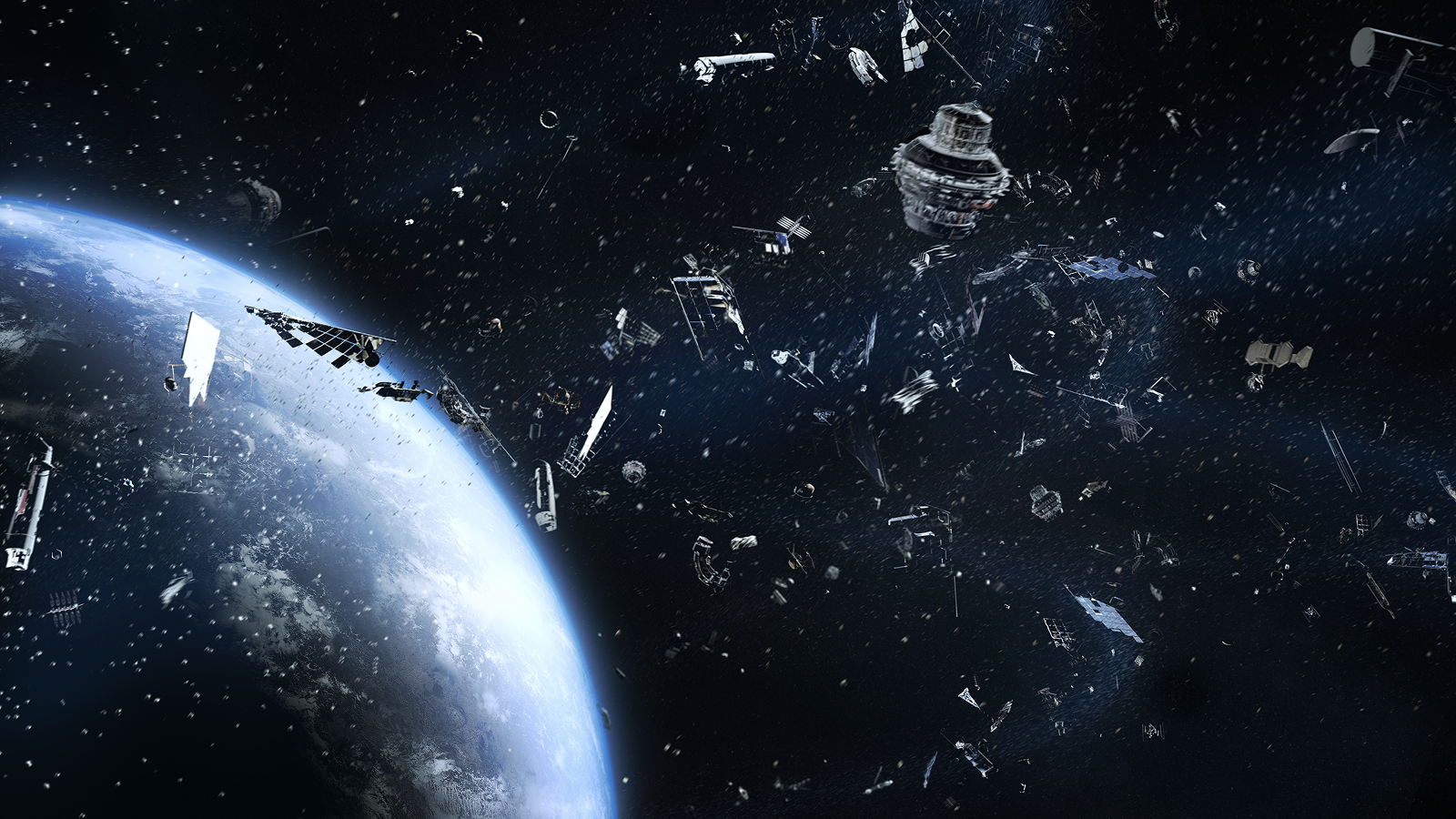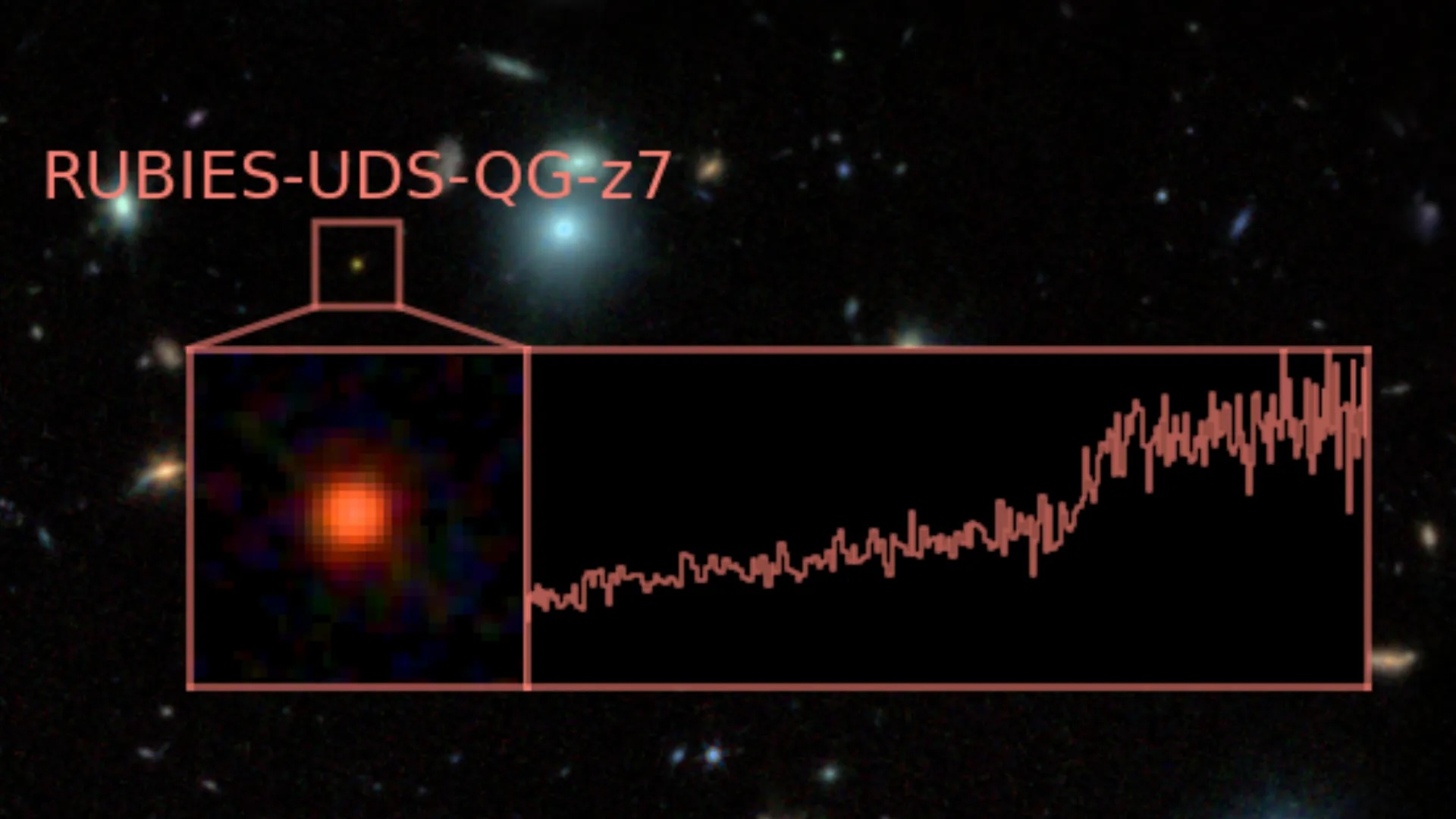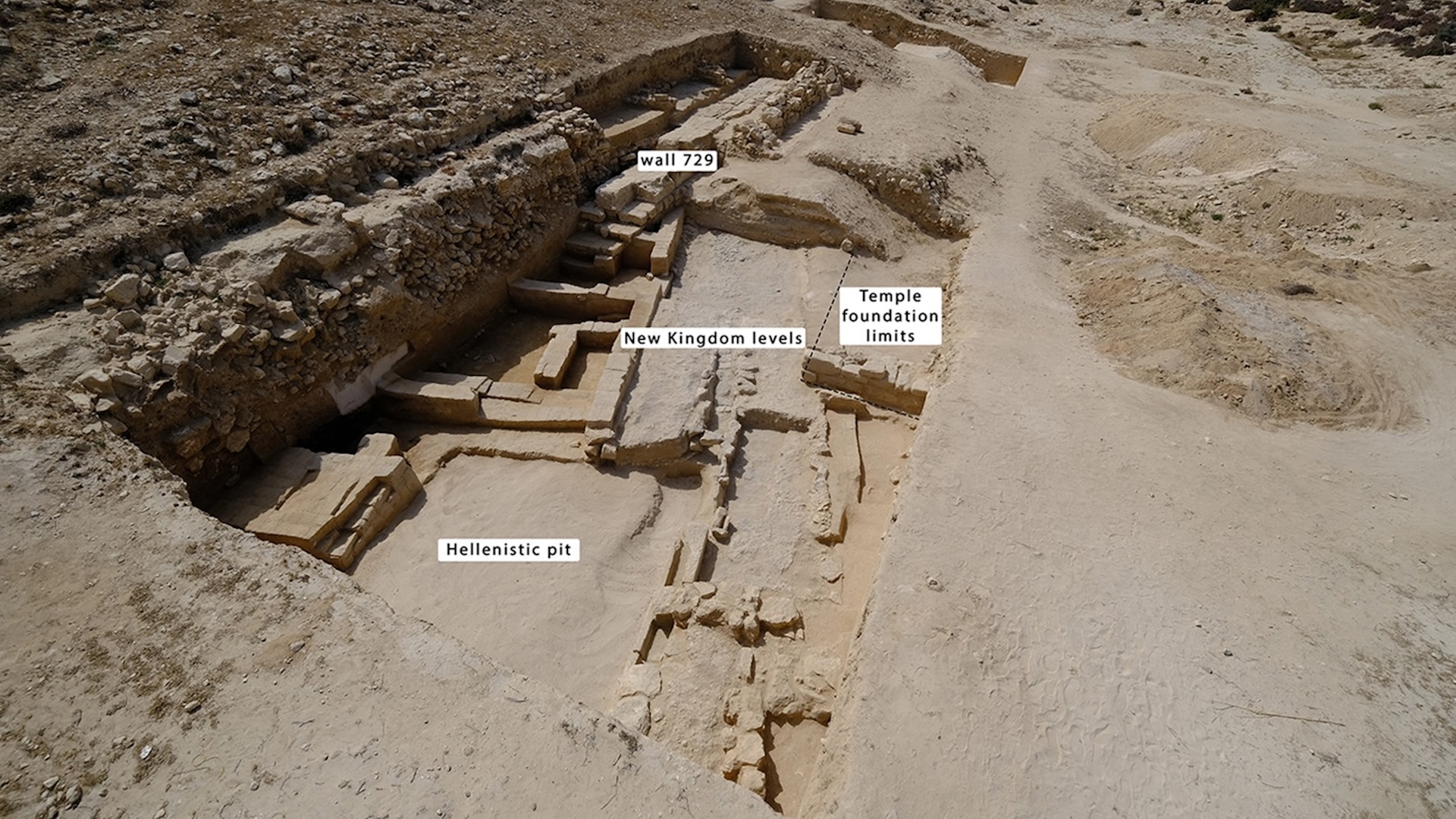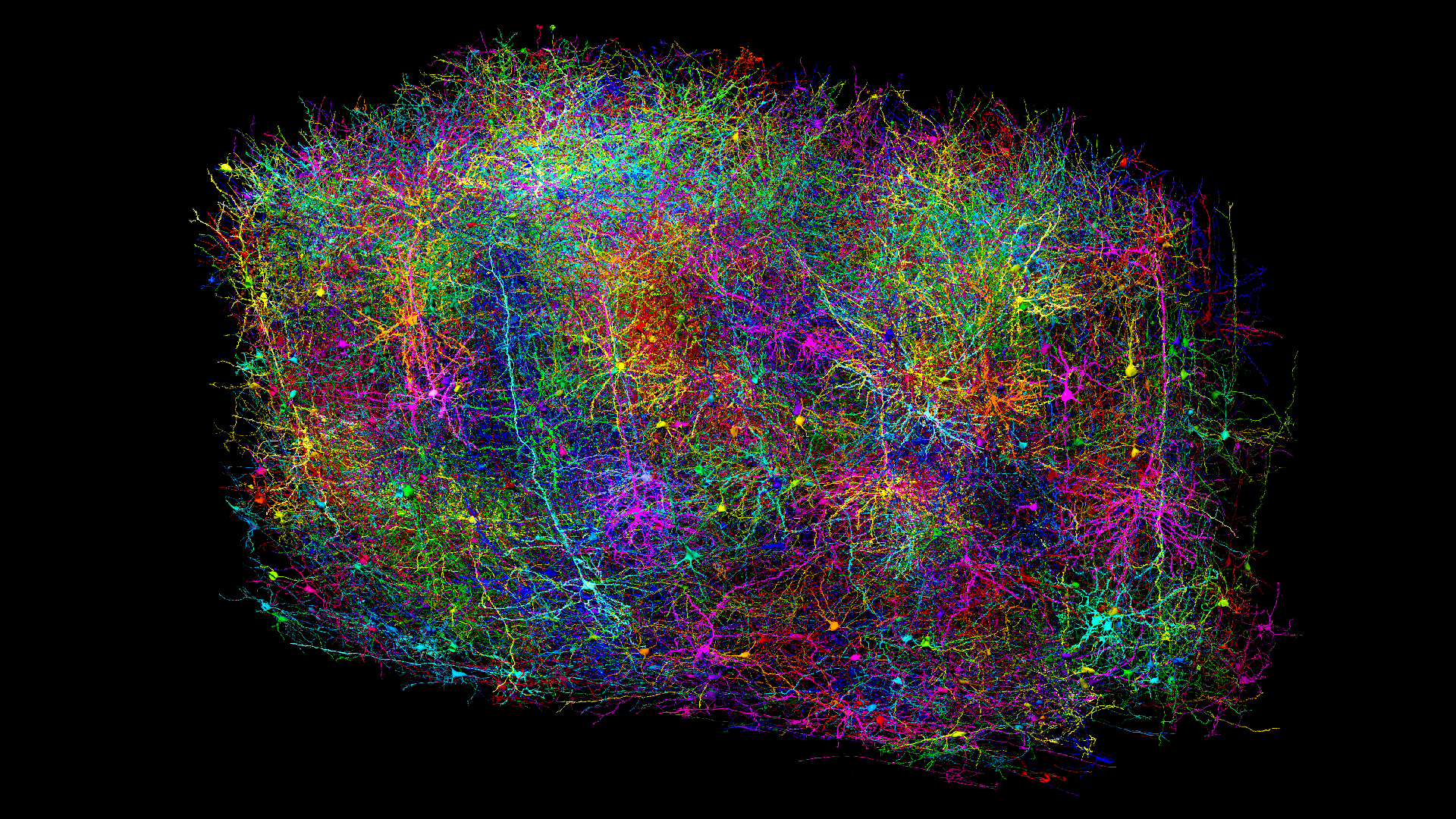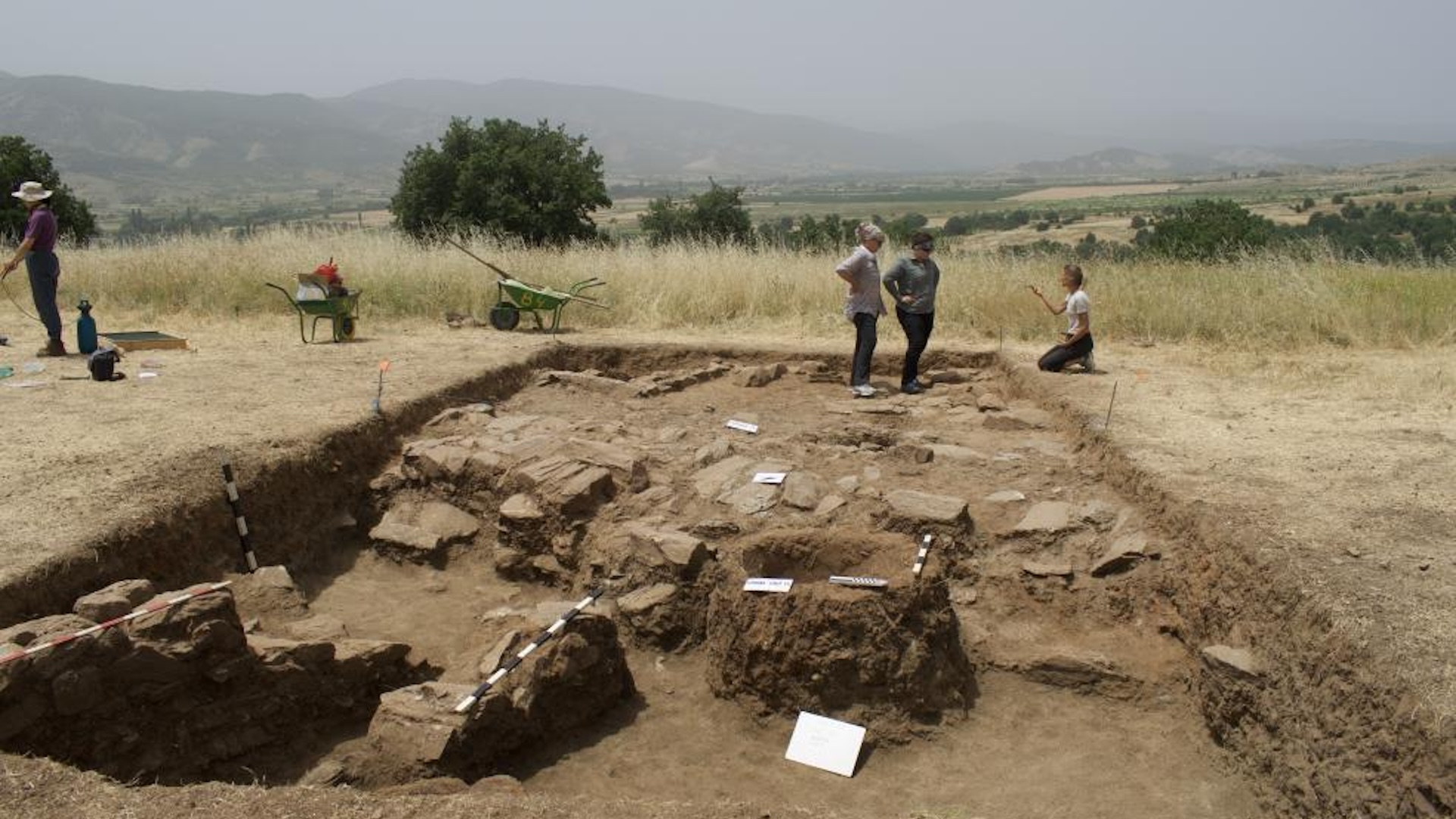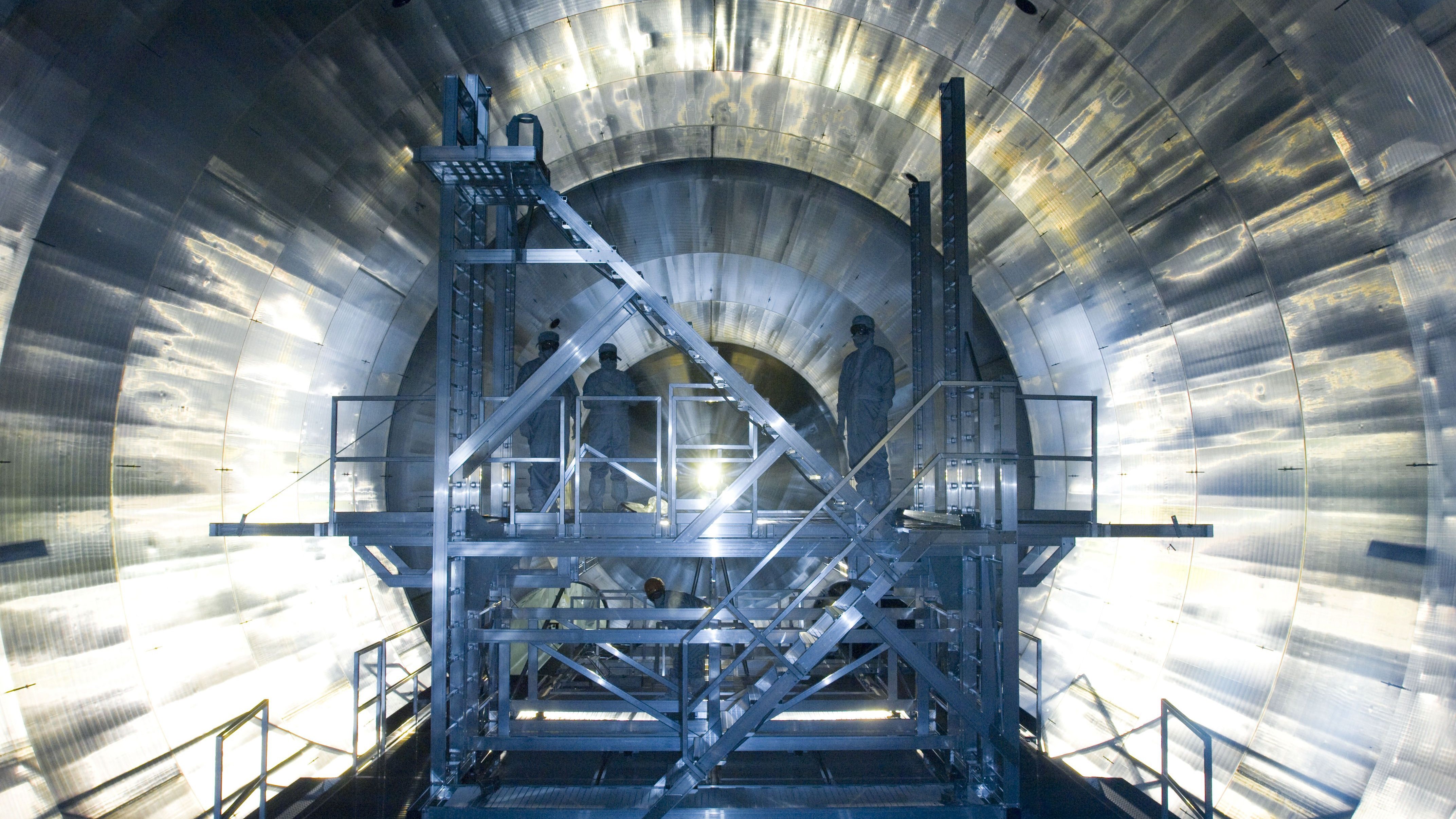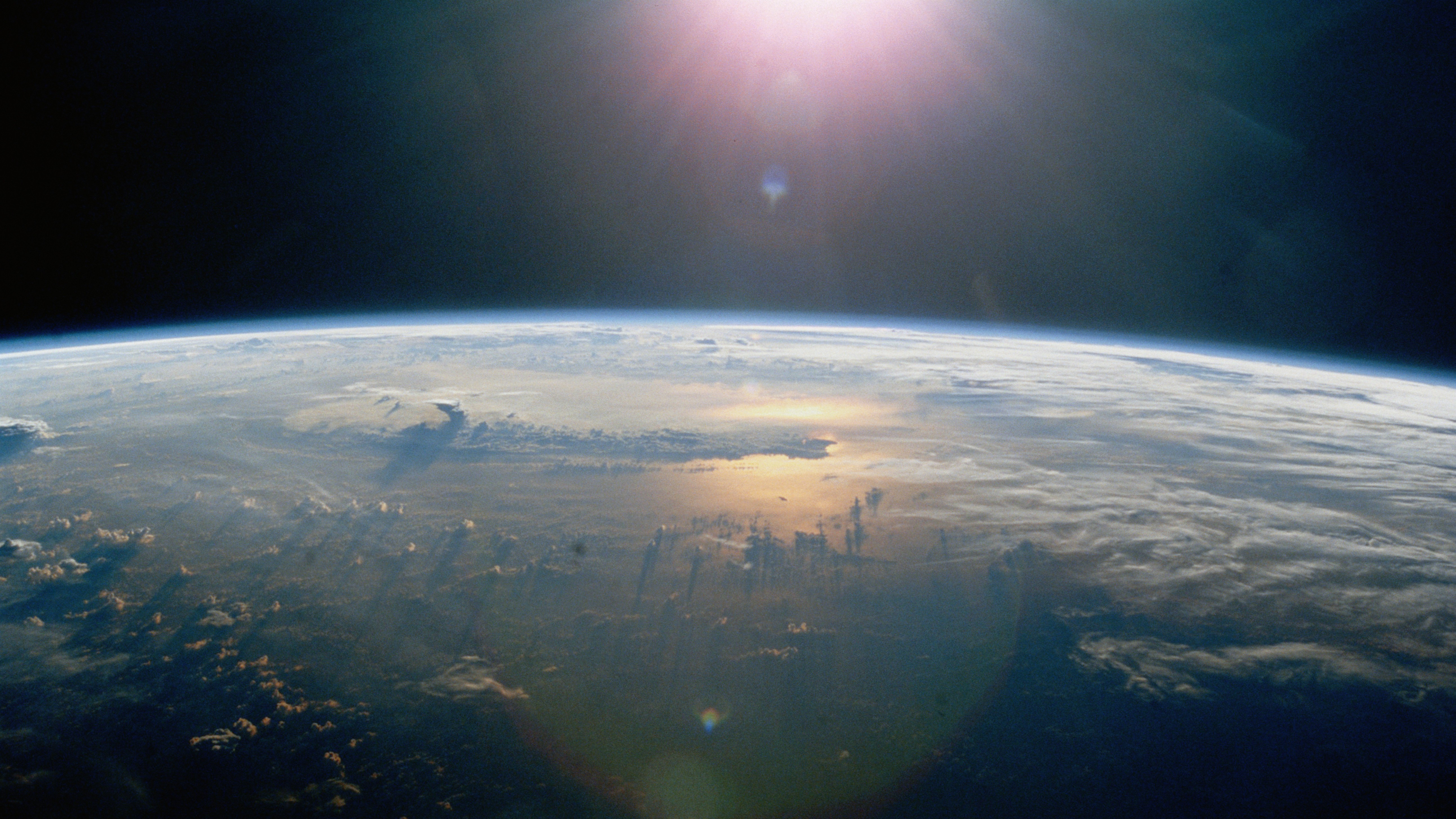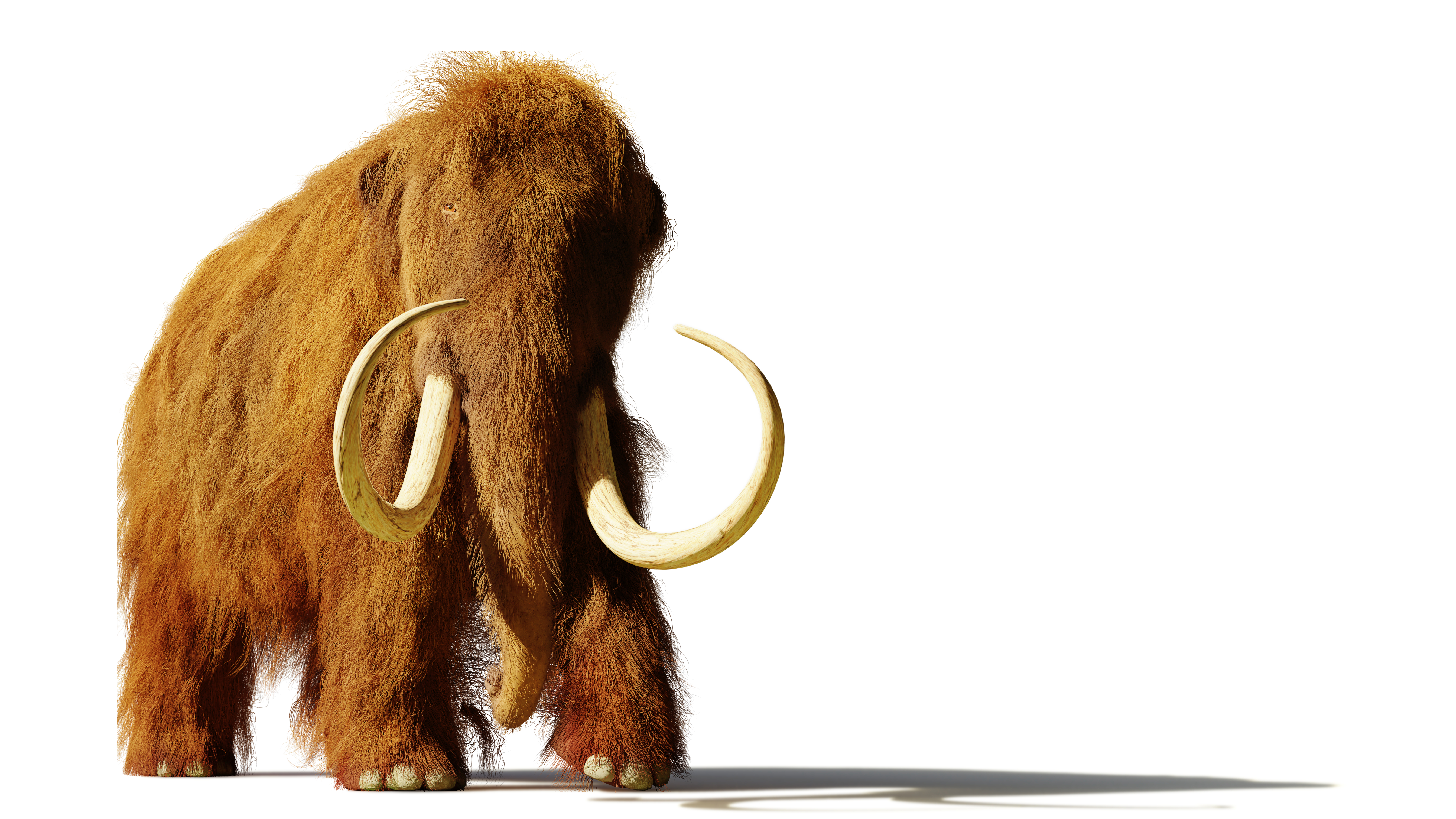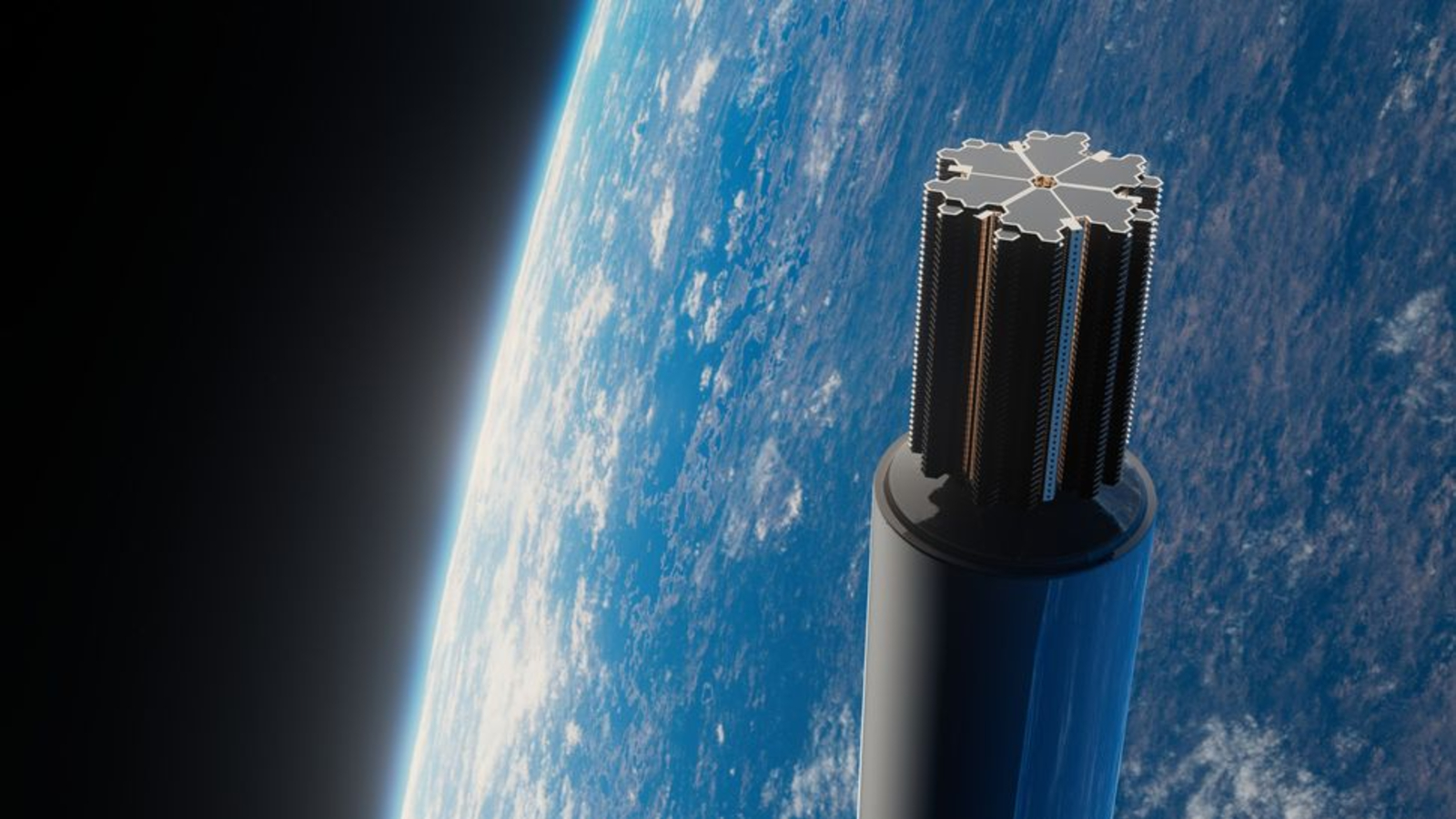NASA rover watches 'fiendish' Martian 'dust devils' collide in rare case of extraterrestrial cannibalism
Video footage captured by NASA's Perseverance rover shows a small "dust devil" merging with a much larger twister on the surface of Mars.
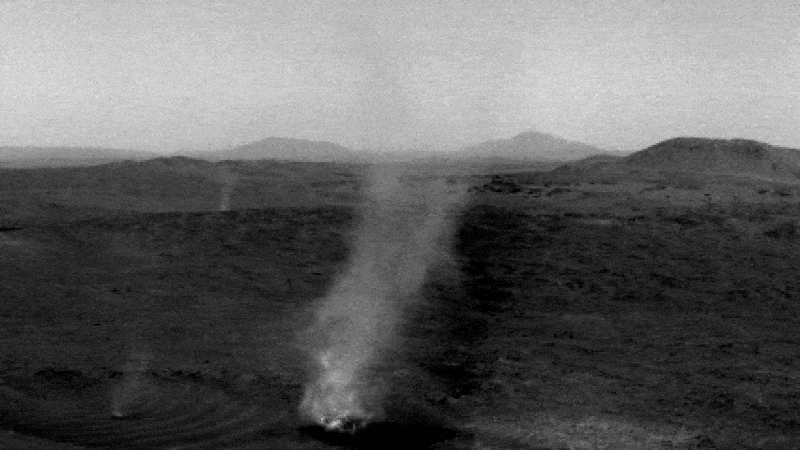
NASA's Perseverance rover recently had a front-row seat to a rare case of Martian cannibalism: It filmed a massive, swirling "dust devil" engulfing a smaller twister on the Red Planet.
The roaming robot captured the epic encounter on Jan. 25, on the 1,399th sol (Martian day) of its mission. In the video, a smaller devil, which is barely visible in the images, follows in the wake of a larger twister (moving from left to right), before getting too close and being sucked into the larger vortex. The rover was around 0.6 mile (1 kilometer) from the pair when this happened.
The larger devil is estimated to measure around 210 feet (65 meters) wide, while the smaller cone appears to be just 16 feet (5 m) across. It is unclear how tall they were as they were cut off by the rover's field of view. However, a dust devil previously filmed by Perseverance — and with a width almost identical to the larger devil — was predicted to be around 1.2 miles (2 km) tall, or around five times taller than the Empire State Building.
"Convective vortices — aka dust devils — can be rather fiendish," Mark Lemmon, a Perseverance senior research scientist with the Space Science Institute in Boulder, Colorado, said in a NASA statement. "These mini-twisters wander the surface of Mars, picking up dust as they go and lowering the visibility in their immediate area."
Related: Listen to a Martian dust storm engulf the Perseverance rover in eerie, world-first audio recording
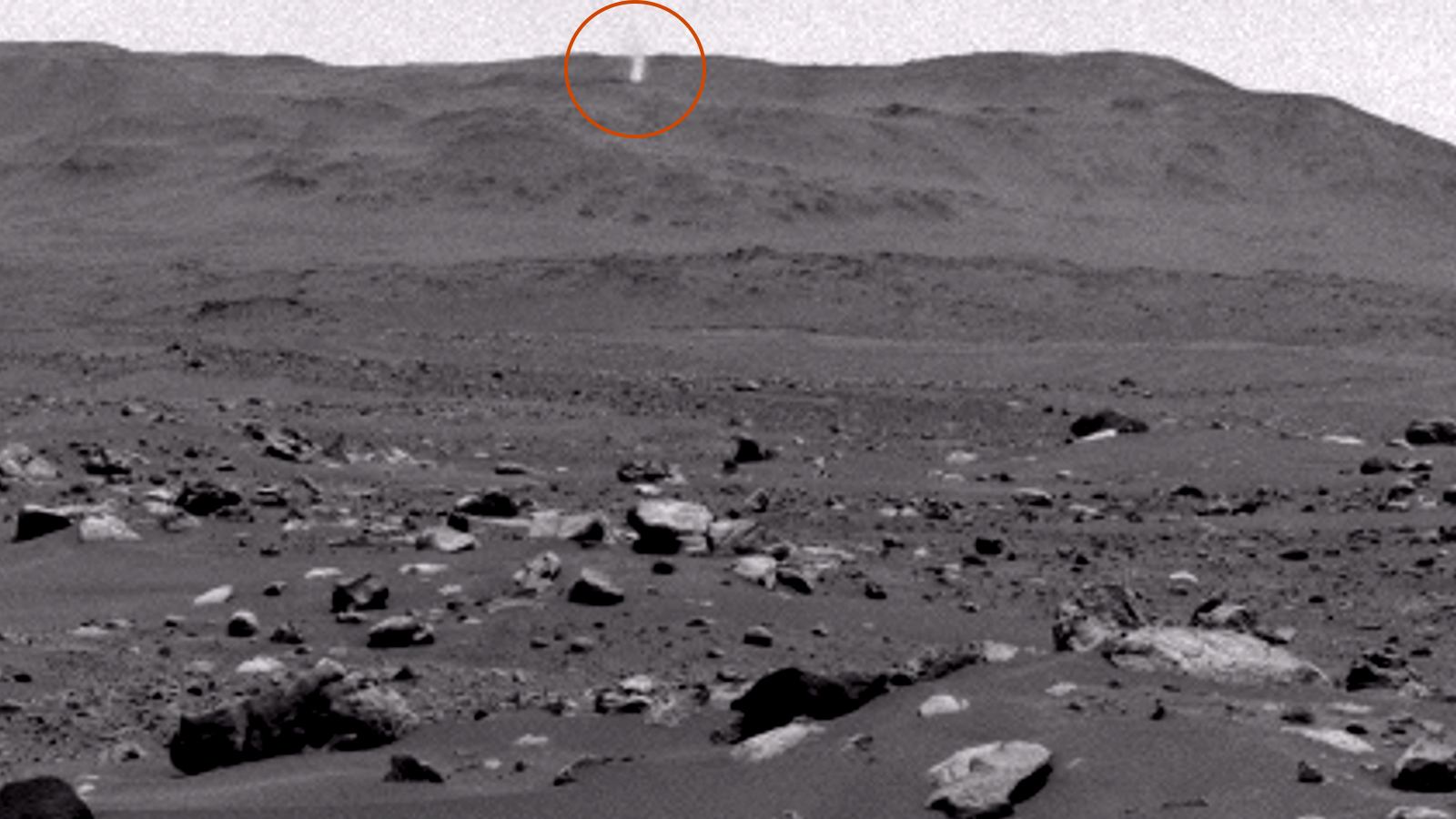
It is very rare for two dust devils to collide with one another, but when it happens, there are two possible outcomes: "If two dust devils happen upon each other, they can either obliterate one another or merge, with the stronger one consuming the weaker," Lemmon said.
"If you feel bad for the little devil in our latest video, it may give you some solace to know the larger perpetrator most likely met its own end a few minutes later," he added. "Dust devils on Mars only last about 10 minutes."
Sign up for the Live Science daily newsletter now
Get the world’s most fascinating discoveries delivered straight to your inbox.
The largest devil was likely spinning at a max speed of more than 10 mph (16 km/h), based on data collected from previous sightings.
Martian dust devils
Dust devils are formed by warm air rising from the planet's sun-heated surface. As the air rises, cooler air rushes down to replace it, which is then heated and rises again. This cycle creates a column of rising air that starts to spin increasingly quickly. This phenomenon also occurs on Earth, though the results are usually far less dramatic.
"When the incoming air rises into the column, it picks up speed like a spinning ice skater bringing their arms closer to their body," NASA representatives wrote in the statement. "The air rushing in also picks up dust, and a dust devil is born."
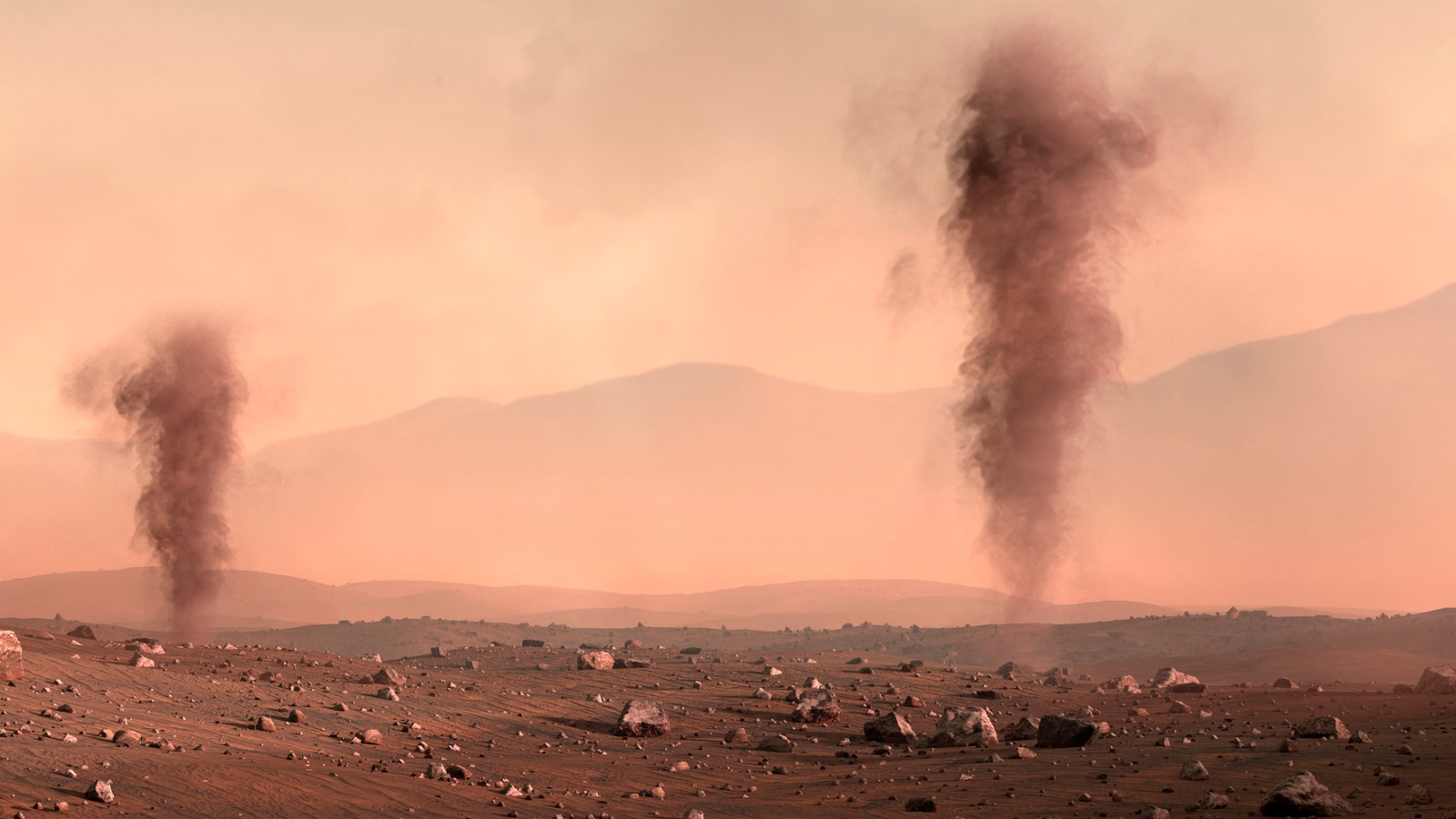
When the new video was taken, Perseverance was deliberately scouring the horizon in search of the spinning devils to help gather data that can help researchers learn more about this phenomenon.
"Dust devils play a significant role in Martian weather patterns," Katie Stack Morgan, a project scientist for the Perseverance rover at NASA's Jet Propulsion Laboratory in Pasadena, California, said in the statement.
Studying them is important because "these phenomena indicate atmospheric conditions, such as prevailing wind directions and speed, and are responsible for about half the dust in the Martian atmosphere," she added.
NASA's Viking orbiters captured the first-ever images of Martian dust devils in the 1970s, as the spacecraft spied the swirling structures from space.
However, Perseverance has captured some of the best videos of these mini-twisters, including a swarm of around a dozen funnels in July 2021. The rover also captured the first audio recording of a Martian dust devil in September 2021.

Harry is a U.K.-based senior staff writer at Live Science. He studied marine biology at the University of Exeter before training to become a journalist. He covers a wide range of topics including space exploration, planetary science, space weather, climate change, animal behavior and paleontology. His recent work on the solar maximum won "best space submission" at the 2024 Aerospace Media Awards and was shortlisted in the "top scoop" category at the NCTJ Awards for Excellence in 2023. He also writes Live Science's weekly Earth from space series.
You must confirm your public display name before commenting
Please logout and then login again, you will then be prompted to enter your display name.
